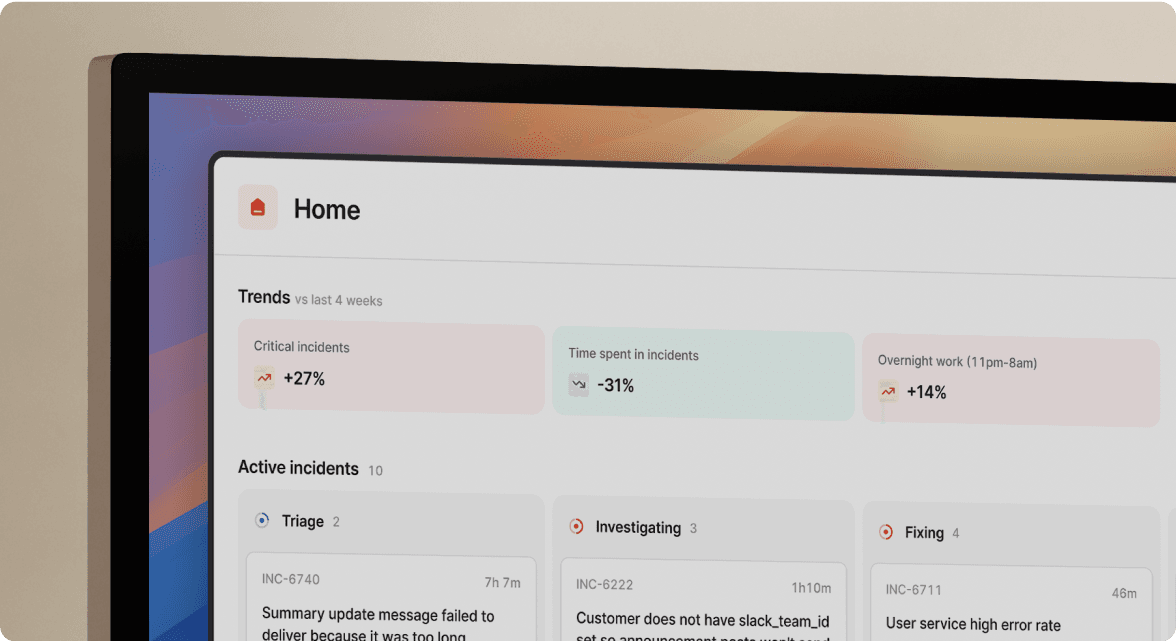API updates for users, follow-ups and actions
July 19, 2023

We've been showing our public API some love this week, with new endpoints, and some custom field improvements.
If you've not seen it before, our API documentation contains everything you need to get up and running.
Splitting actions and follow-ups
As features, actions and follow-ups used to look pretty similar to each other — but over time, they've changed. Our public API hadn't quite evolved with them: our Actions V1 API endpoints return both follow-ups and actions.
That became pretty confusing, so we've split them. We now have Actions V2 and Follow-ups V2 endpoints available via our public API. This makes it easier to differentiate the two, and also means that we can return more information about follow-ups. We now provide the follow-up priority, external issue reference, and description.
We hope that this split will make life easier for anyone who wants to build their own follow-ups integrations: whether that's custom reporting, or integrating with issue trackers that we don't support yet. Check out Actions V2 and Follow-ups V2 in our API documentation for the full details.
Users
You can now list users using our public API. This is particularly helpful when using other API endpoints that take a user ID, such as when you're assigning an incident role to somebody. The list users endpoint will also let you know the role of each user, as well as their name, email and Slack user ID.
Catalog-backed custom fields
When we released Catalog, we also included the ability to have custom fields powered by catalog types. We now have support for this within the API, allowing you to see (and set) the values for these fields just as you would with any others.
You can see this in action in the incidents API, where custom field values now include the catalog entry.
🚀 What else we’ve shipped
We’ve been quite busy here shipping a lot of smaller features, bits of polish and bug fixes. See below for all the items the team has been up to:
New
- You can now create learning tasks that require one or more custom fields are set
- When you escalate to PagerDuty or Opsgenie, you now see a link to the escalation that was created
- Reintroduced the ability to mark an incident as a test from the incident home page
- Our Zapier integration now fully supports catalog-backed custom fields
- You can now filter by incident mode on the incident list view, allowing you to see just tutorial incidents or just test incidents
- You can now include the URL of an incident Jira ticket in post-mortems or workflow steps
- 💅🏻 Removed bold styling on the link to a status page from the dashboard
Improvements
- We've cleaned up the post-mortem menu on the incident home page, so it's a little nicer on the eyes
- Polished the incident create and close forms on the web to avoid layout shift
- Links in Jira tickets and Confluence post-mortems will now be links rather than just text
- Notion configuration displays the connected user
- The users list is now paginated leading to faster load of the user settings page for large organizations
- Status page domains in catalog are now links that take you to your public status page
- Only show "I don't know" for incident type if triage incidents are enabled
- Improved catalog item search behaviour
- Load new Slack channels into the catalog immediately
- Improved the performance of catalog queries in workflows
Bug fixes
- Fixed a bug where the 'include private' toggle wasn't showing on the incident list page
- Fixed bug where you couldn't create a new if/else expression that returned a PagerDuty Escalation Policy or Service
- We'll now map users in external systems like Jira and PagerDuty when the email addresses don't have the same cases
- Fixed a bug where we were making a bit of unnecessary slack noise by renaming a channel multiple times
- Fixed a bug where our web UI limited custom field options to 50 characters, but our API applied a 100 character limit
- You can now install our sentry integration when logged in to multiple orgs
- Fixed links to incidents within insights for users logged in to multiple orgs
- Prevent users from editing the reporter role
- Exporting to Jira now handles headings that contain multiple custom field values
- When changing the severity in the dashboard, we'd sometimes incorrectly think you were closing the incident
- Custom field options (and groups of options) are now displayed in the correct order
So good, you’ll break things on purpose
Ready for modern incident management? Book a call with one of our experts today.

We’d love to talk to you about
- All-in-one incident management
- Our unmatched speed of deployment
- Why we’re loved by users and easily adopted
- How we work for the whole organization



